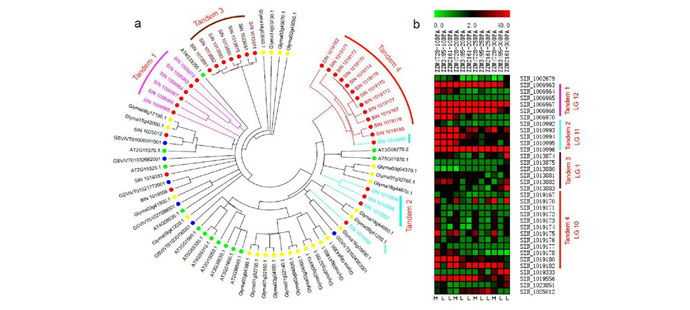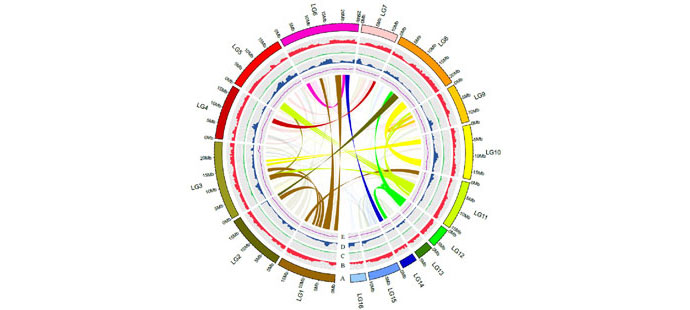Genome sequencing of the high oil crop sesame provides insight into oil biosynthesis
Date:2014/12/16 Hits:
Recently, the genome sequencing of sesame has been finished by the research group led by Prof. Zhang Xiurong in the Oil Crops Research Institute (OCRI) of the Chinese Academy of Agricultural Sciences (CAAS), in cooperation with Bejing Genomics Institute (BGI-Shenzhen). The study explored the biosynthesis mechanisms of lipid and the antioxidative furofuran lignan sesamin. Corresponding research paper entitled Genome sequencing of the high oil crop sesame provides insight into oil biosynthesis has been published on the Genome Biology (doi:10.1186/gb-2014-15-2-r39).
Sesame belongs to the asterids clade of eudicots, taxonomically, is mostly related to Utricularia gibba, the only species sequenced in the order Lamiales. So it provides an important resource for evolutionary study and comparative genomics. The genome size of sesame had been considered to be about 900Mb. Based on flow cytometry and genome survey analyses, Prof. Zhang and her group indicated the size should be in the range 337-357Mb. The genome was predicted to contain 27,148 protein-coding genes, and 84% of them were annotated.

Elucidation of the sesame genome allowed the unprecedented opportunity to study oil biosynthesis for its high oil content (~55% of dry seed) and small genome size. In comparison to soybean (Glycine max), the research group found the total number of lipid-related genes in sesame was less than that in soybean, but the gene families encoding lipid transfer protein type 1 (LTP1) had been expanded by tandem duplication, and 90% of them were living in gene expressions. In contrast, the two cytosolic lipoxygenase (LOX) and lipid acyl hydrolase-like (LAH) families related to the degradation of lipids are both contracted in sesame. So the researchers speculate that the expansion of some lipid transport gene families together with the contraction of lipid degradation-related families lead to higher oil content in sesame than soybean. The study also showed the expression of PDAT in collaboration with other genes plays a pivotal role in shaping the oil accumulation in the early stage of sesame seed development.
Sesamin is an important pharmacological constituent of sesame. The study also showed the key gene for sesamin biosynthesis was only detected in sesame, indicating the genetic foundation for the sesame-specific product.

It had been acknowledged that the absence of TIR domain-containing resistance genes is rare in eudicots. The study showed the TIR domain-containing resistance genes at the whole genome scale in sesame were the unambiguous absent, which provides a new paradigm for the study of the evolution of resistance genes.